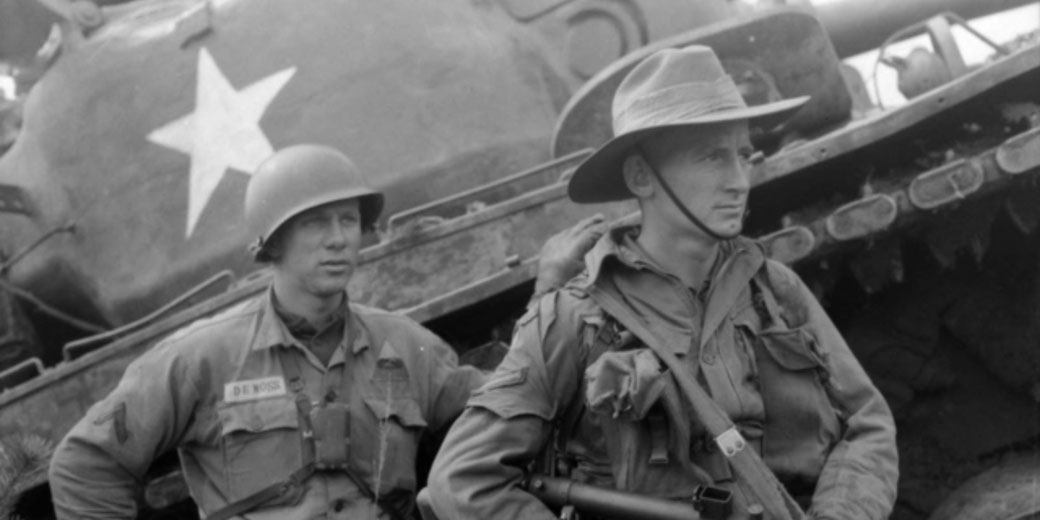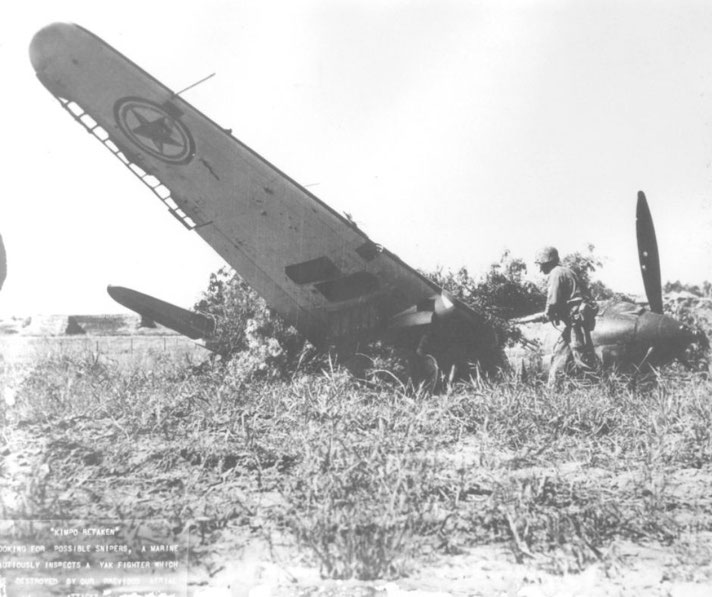The bloody disaster of the Korean War

The Korean War was one of the first major conflicts of the Cold War era. It took place on the Korean Peninsula between 1950 and 1953, when North Korea invaded South Korea and ended with an armistice agreement that divided the peninsula along the 38th parallel.
The subsequent war would leave millions of people dead or wounded, and after three years of fighting, achieve no territorial gains for either side.
The war led to the creation of two separate Koreas, which still exists today.
Why did North and South Korea want to go to war?
The earliest triggers of the Korean War were the result of how Korea was divided following the end of World War II.
The Soviet Union and the United States had ended the war as allies, while Korea had been a conquered territory by their mutual enemy, Japan.
Once Japan had been defeated in 1945, the Soviet Union and the United States agreed to temporarily divide Korea as two distinct zones of occupation until a later decision could be made about how to reunite the country again.
The Soviets would look after the northern half and America would administer the south.
However, a number of Korean groups, ranging from far-right nationalists to communists, claimed to represent an independent government but failed to come to terms with the Soviet and American occupiers.
As a result, the two superpowers were unable to agree on a plan for reunifying the country.
So, in 1948 they decided to withdraw from Korea and left it divided into two separate states: North Korea and South Korea.
These two new nations had a hostile relationship from the start, especially along the agreed border along the 38th parallel.
At the core of the rivalry between North Korea and South Korea was their differing views on socialism and capitalism.
North Korea felt it was leading the way for other communist countries in Asia, while South Korea saw itself as a capitalist state aligned with the West.
As this difference in ideals became more heated, each side began to arm itself with weapons given by its allies.
Syngman Rhee was elected as president of South Korea in May of 1948, while Kim Il-Sung became the first communist leader of North Korea, backed by the Soviet Union.
Almost immediately, Kim Il-Sung planned an invasion of South Korea in the hope to reunify the peninsula.
To this end, the Soviet Union helped prepare North Korea for war by providing extensive military equipment, training, and strategic planning advice.
How the Korean War began
The final outbreak of war came as a surprise to many people, as there had been no open conflict between the two Koreas since their separation.
On June 25, 1950, North Korean troops invaded South Korea. They advanced rapidly, thanks to the Soviet-made tanks and the fact that the soldiers outnumbered those of the South Koreans.
Syngman Rhee immediately called for a strong military response to North Korean aggression and sought substantial US support.
So, on the same day as the invasion, the United Nations Security Council in New York condemned the actions of North Korea.
Then, the United Nations Security Council passed Resolution 83 on June 27th, which committed forces from willing nations to the aid of South Korea.
Specifically, the US was assigned command of these forces, under the leadership of the US General Douglas MacArthur.
Interestingly, the country of Australia was one of the first countries to respond to South Korea's call for assistance.
It sent troops to be part of the international force led by the United States. Twenty additional nations also assisted, including New Zealand.
In fact, by the end of the conflict, almost 18,000 Australian servicemen would be involved.
How North Korea almost won the war early
On June 27, US troops based in Japan, where they were serving as an occupation army, were sent to Korea.
They tried to help the South Koreans slow the communist force's advance, but they were forced back to Pusan, a southern city of Korea, on July 4th.
The situation was dire for the South Koreans. They were now essentially surrounded and trapped in the eastern corner of their country and facing potential defeat.
A counterattack was planned at the Battle of Osan, which occurred on July 5th, and was the first major conflict between American and North Korean troops.
However, the American troops were unprepared and were forced to withdraw.
The democratic forces tried again, this time at the Battle of Pusan Perimeter, which occurred between August 4th and September 18th.
Bolstered by the new UN forces, they finally managed to stop the North Korean advance.
This was an important turning point in the war, as it was the first time that the UN had been able to successfully halt the invasion.

The dramatic landing at Inchon
It was decided that in order to significantly turn the war in the favour of the UN forces, there needed to be a large invasion elsewhere on the Korean peninsula.
If it could take place behind the North Korean battle line, it was hoped that it would draw the enemy troops away for the Pusan area.
Therefore, on September 15, 1950, international troops of the United Nations Command, landed a massive invasion force at Inchon on the west coast of Korea.
This was a successful surprise attack. Despite the difficulty of landing troops on a hostile beach, the American troops were able to seize the area and cut off North Korean supply lines.
As expected, the victory at Inchon forced the North Koreans to retreat back north and relieve the pressure on the South Korean forces at Pusan.
Following the Inchon landings, the UN forces were quickly able to recapture Seoul, the capital of South Korea.
Then, between October and November, UN forces continued their offensive and were even able to cross the 38th parallel and push north into North Korea.
In a remarkable turn of events, they captured Pyongyang, the North Korean capital, on October 19th.
The sudden Chinese intervention
As UN forces were securing their control over the North Korean capital of Pyongyang, China decided to intervene in the war.
The Chinese had been providing support to North Korea throughout the conflict but had not been openly involved in fighting until this point.
However, the Chinese government, which was also communist, had warned that if UN troops crossed into North Korea, they would intervene.
So, the capture of Pyongyang was seen as the UN's open ignorance of China's threats.
When the UN forces, under General Douglas MacArthur, then pushed towards the Yalu River, which borders China, it prompted the Chinese to intervene.
In early November 1950, units of the Chinese People's Volunteer Army crossed the Yalu River into North Korea.
The entry of China into the war was a dangerous moment. The war was becoming a gradual global conflict, pulling in more and more countries.
These new Chinese forces successfully drove UN troops back and regained control of Pyongyang.
From then on, China continued to send hundreds of thousands of soldiers to fight against UN forces.
How the war became a punishing stalemate
The UN troops were driven all the way back beyond the 38th parallel, and lost Seoul again.
But, a fresh UN campaign recaptured Seoul in March 1951, but it was stopped near the 38th parallel.
The fighting continued throughout 1951, but neither side was able to make significant gains.
Finally, in July 1951, peace talks began between in the two sides in Kaesong, but they failed to produce an agreement.
Even though both sides were willing to sign a ceasefire, the negotiations stalled on the issue of prisoner-of-war exchange.
As a result, the war continued, but with no territorial gains. It remained a stalemate, with both sides dug in along a line known as the 38th parallel.
How a temporary armistice was finally signed
Finally, on July 27, 1953, an armistice was signed. With the border between North and South Korea reset to where it was in 1950, along the 38th parallel, the war came to an end.
This division still exists today, and the two Koreas officially remain in a state of conflict.
The armistice also led to the creation of the Demilitarized Zone (DMZ), slightly north of the 38th parallel due to territorial adjustments following the armistice negotiations, which is now a buffer zone between North and South Korea.
Ultimately, the war lasted for three years, and even though it did not technically end with a peace treaty, it did result in a significant reduction in violence.
So far, there have been no large-scale military conflicts since 1953, although there have been several smaller skirmishes and continued political tensions.
What were the consequences of the Korean War?
It is estimated that around 1.2 million people were killed during the war, while around 2.5 million people were wounded.
This includes civilians, as well as soldiers from all sides.
In particular, the United States suffered approximately 36,574 deaths and over 103,000 wounded.
For those people living in the warzone, the war had a devastating effect on Korea’s economy and infrastructure.
Much of the country had been destroyed, and it took many years for both Koreas to recover.
Most importantly, the division of the country led to the development of two very different societies, and the two Koreas remain in a state of tension.
The DMZ is still in place, and there have been periodic outbreaks of violence.
The Korean War also set a precedent for future conflicts, as it was one of the first wars fought between superpowers in the post-World War II era.
It demonstrated the potential for proxy wars during the Cold War, with the United States and the Soviet Union supporting opposing sides in regional conflicts around the globe.
Further reading
What do you need help with?
Download ready-to-use digital learning resources
Copyright © History Skills 2014-2025.
Contact via email
With the exception of links to external sites, some historical sources and extracts from specific publications, all content on this website is copyrighted by History Skills. This content may not be copied, republished or redistributed without written permission from the website creator. Please use the Contact page to obtain relevant permission.





